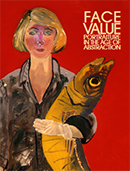Introduction

After World War II, as American Abstract Expressionists attained international prominence, portraiture, as one critic expressed it, came “to a dead halt.” Another declaimed authoritatively that a progressive artist could no longer paint the figure. In the late 1960s, when Chuck Close started making his large heads, he recalled that “the dumbest, most moribund, out-of-date, and shopworn of possible things you could do was to make a portrait.” While figurative art declined between 1945 and 1975 in response to this prejudice, a number of artists, after fully immersing themselves in the lessons of abstraction, self-consciously and often defiantly took up the challenge of reinventing portraiture. Women and minorities, excluded from the artistic mainstream but flexing new muscles, also invigorated traditions with powerful political or humanistic themes. Against the background of a post–World War II cultural resurgence in music, poetry, theater, and film—as well as Cold War paranoia and the growing activism regarding civil rights, the Vietnam War, feminism, and other movements—midcentury artists challenged the stereotype of homogenous American life by reassessing the individual. Keenly aware of the disdain for tradition, these artists chose to explore figurative imagery deliberately. While never forming a single style or school, their artworks exploited the themes and aesthetics of their generation and reinvigorated portraiture as a progressive art form. The public enthusiasm for the 1976 exhibition of portraits that Andy Warhol and Jamie Wyeth made of each other signaled a rebirth in the art world of the age-old impulse for human portrayal.
National Portrait Gallery, Smithsonian Institution
April 18, 2014 through January 11, 2015






